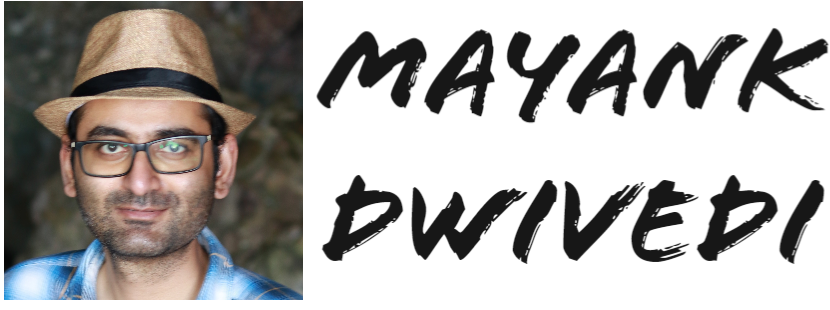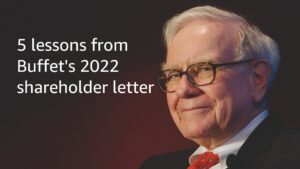0. What is this post about?
Investing in the stock market is one of the best ways to generate wealth over time. If you are a retail investor, you would have heard the investment advice to build a concentrated portfolio, in order to increase your returns. You will also get the advice to diversify your portfolio, to hedge your risk. You may find both of this advice contradictory to each other. How much diversification is ok to be concentrated enough, and vice versa.
Well, both of these pieces of advice are not as contradictory as it appears on a first read. And this is what I will uncover in this post. We will learn about Concentrated Portfolio, Diversified Portfolio, pros and cons of over/under doing these styles of portfolio creation. In the second part of the post, we will build a sample stock portfolio which is both concentrated, yet diversified. This sample stock portfolio will be created based on the brands you use in your daily life. No technical analysis, no finance jargon, plain vanilla stock portfolio creation based on your everyday experience. Let’s get started.
1. All about Concentrated Stock Portfolio
1.1 What is Concentration?
Concentration means less number of stocks in your portfolio. A total of 2000 companies are listed on the National Stock Exchange (NSE) as of September 2022. You may not want to own all these 2000 stocks, as not all stocks are equally good. You also do not want to invest in only one stock. Having a concentrated stock portfolio is defined as having between 10 to 30 stocks in your portfolio. Having too many stocks may dilute your portfolio returns, and having too few stocks can increase risk of investment returns. Lets dig deeper into too much concentration, and too less concentration next.
1.1 Highly Concentrated Portfolio – Pros and Cons
A stock portfolio with less than 5 stocks can be called a highly concentrated portfolio. Let’s take an extreme example of a highly concentrated portfolio, where you have only one stock in your portfolio.
The Pro of this kind of portfolio is that if you choose the right stock, at the right time, and this stock rises for the upcoming month/year, you will see high returns. However, as is the inherent nature of stock price movement, it never goes up linearly, or goes down all the time. It goes up and down in cycles. If the stock is fundamentally good, it will go up over time.
The Con of this approach is that your investment return is tied to just one stock. What if the company behind the stock goes bust? The management of the company may abruptly resign. The company gets into a fraud case, which dents the market reputation of the company. Many things can go wrong with a company, and betting all your money on one company is akin to buying one lottery ticket and expecting to win the lottery.
As investing veterans have often said, no one can predict the market price of a stock accurately. Hence as retail investors, we should not bet everything on one single company. A portfolio with less than 5 stocks can be called highly concentrated, and should be avoided.
1.2 Low Concentrated Portfolio – Pros and Cons
Low concentrated portfolio has more than 50 stocks. Let’s take an extreme example of a low concentrated portfolio with 500 stocks in it. Pro of Low Concentrated portfolio is that your investment risk is low. Even if 10 companies, out of 500 companies you invested in, go bust or to zero price, your overall portfolio will not get much impacted, as only 2% of your investments has gone to zero. The remaining 98% of investments will give some return. This is also a con. Let’s say 1 company in your portfolio turns multi-bagger, and gives you 100% returns in a year. However, your overall portfolio impact will be very less, as only 2% of your investments became double. The overall impact of 100% returns on 2% of your portfolio is a meagre 2% overall returns.
A low concentrated portfolio leads to low returns, and low risk. This is not an expected outcome. The returns from a low concentrated portfolio might not even be able to beat your savings account returns of 3% per year. Retail investors investing in the stock market expect a higher rate of return – at least higher than the average rate of inflation in India, which hovers around 6%. NSE index, Nifty 50, has given returns of 14% over the past 10 years, and gives you the baseline of equity return expectation. So, avoid investing in too little, and too many stocks.
1.3 What forms a good Concentrated Stock Portfolio?
I would suggest a stock portfolio which has 10 to 30 stocks, as a well concentrated portfolio. Less than 10 stocks increases your risk from volatility, and unforeseen events impacting the company’s future returns. More than 30 stocks reduces your overall returns from equity investment.
If you check the top mutual funds, they have somewhere between 30-80 stocks in the fund, which I would call a little less concentrated. However the weightage of the stocks in a good mutual fund is different for each stock, and usually 80% of the funds’ investments are in 20-30 stocks alone – a good concentrated portfolio.
If we look at smallcase.com, which is a popular platform where SEBI registered advisors, a typical small case has 7-30 stocks. These stocks are given close to equal weightage in the small case portfolio.
If we look at superstart investors in India, they have around 40-50 stocks in their portfolio. Example: Mr Rakesh Jhunjhunwala has 44 stocks (link), Mr Vijay Kedia has 17 stocks (link), Mr Radhakrishna Damani has 17 stocks (link), Mr Ashish Kacholia has 46 stocks (link).
Looking at mutual funds, small cases, and star investors, you can now understand the range of number of stocks in a good concentrated portfolio. Between 10-30 stocks is recommended. As your experience grows in the stock market, you may gain more conviction in some stocks, and may increase your percentage allocation to them. For experienced investors, it is ok to have a high concentrated portfolio. However, for a new investor, I will recommend to start with 20 to 40 stocks in their portfolio, and slowly trim the number down as their conviction grows strong in some stocks, and wanes in some.
2. All About Diversified Portfolio
2.1 What is Diversification?
Diversification means spreading out your investments to hedge risk. The underlying idea is that the spread of your investment will reduce risks associated with one part of investment, while not impacting the other parts. Diversification can be across industry sectors, or across small-cap/mid-cap/large caps.
Each company listed on the stock exchange belongs to an industry sector. Examples of industry sectors are FMCG (Fast Moving Consumer Goods), Banking Sector (Banks, NBFCs), Metals Sector, Information Technology (IT) Sector etc. Each of these sectors have sector-specific risks involved.
Example 1: If Indian currency depreciates in comparison with US Dollar, export centric sectors such as IT will gain, whereas import heavy sectors such as Chemical sector will suffer. Example 2: Poor monsoon season in India will impact farmers’ ability to buy agrochemicals and daily consumption goods. This will negatively impact the Agrochemical sector, and rural India focused FMCG sector.
We see that each industry sector is impacted by different macroeconomic events, some natural, some man made. Investing in only one industry sector is risky. If unfavorable macroeconomic factors cause one industry sector to underperform, your entire stock portfolio with companies only in this industry sector, will be in loss.
However, what if you invested in multiple, unrelated industry sectors? With multi-sector investment, if one sector underperforms, the other sector may overperform, or be unaffected. Spreading your portfolio across multiple industry sectors is called diversification. Example: Indian IT sector overperformed in 2020-2021, while Travel Tourism sector under-performed. This got reversed in 2022, when the Travel Tourism sector picked up, however the IT sector became an under former. Diversification is necessary to reduce volatility in your investment returns.
Diversifying across small-cap, mid-cap, large-cap stocks is also recommended. This is usually done to get stable returns from large caps, and enjoy the faster growth in the small-cap and mid-cap space. I have a separate post on core and satellite portfolio strategy, which goes into details of this approach.
2.2 Concentration vs Diversification – which is better and why?
In a way, concentration and diversification are similar, as a concentrated portfolio suggests to avoid both the extremes, too few stocks, and too many stocks in your portfolio. Diversification also suggests avoiding investing in too few industry sectors. However, with diversification, having too many industry sectors is not a bad thing. In fact, the Nifty 50 Index – the benchmark index of NSE, has all the major industry sectors, and is often used as a benchmark to compare returns of other mutual funds and industry sector indices.
A portfolio can be concentrated, but not diversified. Example, you have 20 stocks in your portfolio. But all these 20 stocks are from the same industry sector – let’s say IT sector. Then your risk is not spread over multiple sectors, hence the portfolio is not diversified. If there are macro headwinds, such as recession in the US etc., then the IT sector will underperform, making your entire investment underperform.
A portfolio can be diversified, but not concentrated. Let’s say you select only one stock from three independent industry sectors – IT, Chemicals, Real Estate. You have diversified by investing in three industry sectors, hence you have spread your risk across sectors. However, you still have too few stocks in your portfolio, only three. Hence, your portfolio is over-concentrated, and you need to add more stocks.
I hope in section 1 and 2, you were able to get the idea of concentrated and diversified stock portfolios, and understand why these are important. In the next section, we will explore six industry sectors that you interact with in your daily life, and build a sample Stock Portfolio which is both concentrated, yet diversified. And we will do all this with nil financial jargon.
3. Building a Concentrated and Diversified Portfolio from your daily experience
In this section, we will follow the daily routine of a person, and see the products and services this person uses. We will use this routine experience to identify good stocks, in a simple manner. The idea is that if a company has been delighting its customers for a long period of time, and constantly launching new products, doing intelligent marketing, then the company is overall doing good, and spending its capital efficiently to capture its customers’ mindshare, and overall industry’s market share.
3.1 Fast Moving Consumer Goods (FMCG)
Our person’s name is Mr. Anuj. Anuj is a young working professional in his late twenties. He works in Bengaluru, and stays alone in a studio flat. Anuj wakes up in the morning, brushes his teeth to freshen up. Anuj uses Colgate toothpaste to brush his teeth. He has used Colgate toothpaste throughout his life. As a kid, he used Colgate Kids toothpaste in strawberry flavor. As a college student, he used Colgate mint fresh toothpaste, to keep his mouth fresh across the day. As a working professional, he uses Colgate Total to protect his teeth from cavities and rot. He also carries a pocket size Colgate mouth spray to the office, for quick use after lunch/snacks at work. [Listed Company – Colgate]
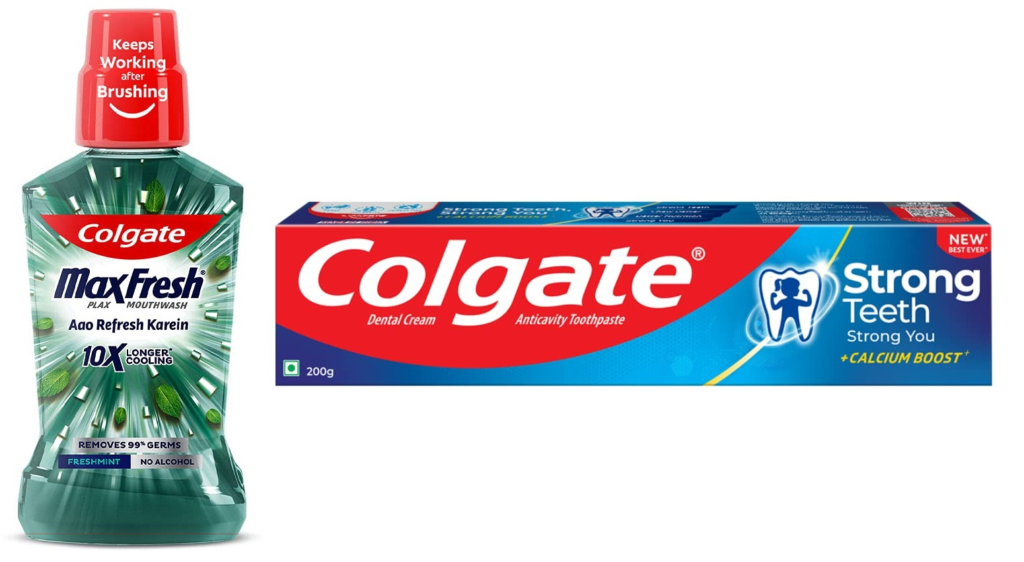
After brushing, Anuj takes a quick bath. As it is winter season, Anuj uses Pears soap, which has glycerin in it, and is good for his dry skin. After bath, he applies a dab of Vaseline on his hands, and sprays Axe deodorant near his underarms to get ready for office. [Listed Company: HUL – Hindustan Unilever].
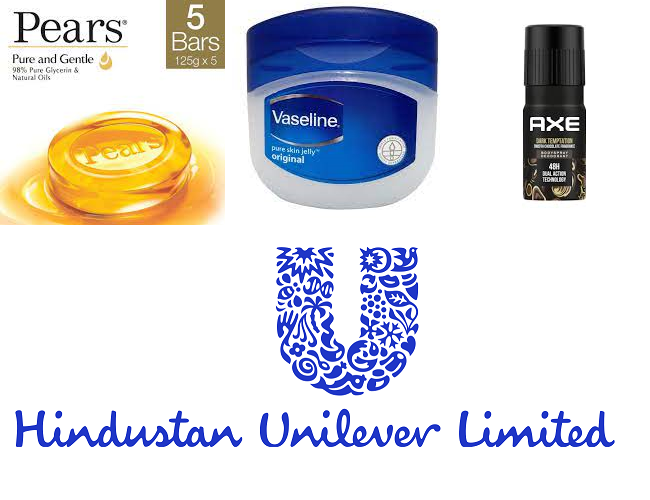
Anuj checks his WhatsApp messages to notice that his cook will be on leave today, as she has fallen sick. Phew! Anuj rummages around the kitchen cupboards to see what he has that can be used for breakfast. He finds Maggi Atta noodles. Anuj tosses out the Maggi packet contents into a pan with boiling water, and has his breakfast ready in 2 minutes. He is feeling a little drowsy, and needs some coffee. He opens his fridge, picks up a can of Nescafe Iced Latte, and drinks it in one go. Anuj’s eyes instantly become wide open with focus. Now, Anuj is all set to leave for his office. [Listed Company: Nestle].

Takeaway
Anuj, during his morning routine, interacts with the products sold by three fantastic FMCG companies – Colgate, Hindustan Unilever, and Nestle. He trusts these brands, has been using them for a long time – like forever. He has easy access to buy them from nearby stores, or online eCommerce sites. These three companies are sound candidates for investment. The only additional filter we will apply is to look at these companies’ growth rates over the past 5 years. This check will ensure that these companies are not on a declining trend. We will look at revenue and profit growth of these companies from the site – screener.in.
We see that HUL and Nestle have grown better than Colgate in the past 5 years. For today, Anuj will select to invest in HUL and Nestle, as the two stock picks from the FMCG sector. Anuj bites into a Nestle KitKat bar as he locks his studio flat behind him, and goes down his society’s lift to catch a cab to office.
3.2 Banking Sector
On his way to work, Anuj gets a SMS reminder to pay his ICICI credit card bill. He opens the ICICI i-Mobile app, and pays the pending bill. While using the app, he gets the option of doing a flexi FD deposit on his savings account to earn up to 6.1% interest rate. He likes the idea, and deposits INR 10K in the flexi FD deposit linked with his ICICI savings account. He likes the convenience of the ICICI bank app, allowing him to perform all banking operations from the ease of his phone. [Listed Company: ICICI Bank].

As Anuj is about to reach his office, he gets a WhatsApp from his dad, to pay for his annual SBI Medical Insurance. Anuj’s dad is not hands on with online payment, hence he usually asks Anuj to make the payment. Anuj promptly makes the payment for his father’s medical insurance by using the renewal payment link shared by his dad [Company: SBI]. Anuj’s dad has been a lifelong user of State Bank of India (SBI) products, and uses SBI for all his financial needs – Savings Account, Medical Insurance etc.

As Anuj pays his dad’s medical insurance premium, he is reminded to pay his own Life Insurance Premium which he took from HDFC Life Insurance [Company: HDFC Life]. Anuj opens his gmail to search for emails from HDFC term insurance. He finds the email from HDFC life, clicks on the payment link, and makes the payment. Life insurance penetration in India is low at 4% in 2021, as compared with developed economies such as the USA where penetration is north of 12%. Anuj was made aware of the use of Life Insurance Premium via his company’s awareness campaign, and he promptly took life insurance to safeguard his dependent parents, in case something happens to him.

Takeaway
We see three listed, and trusted brands in the Banking and Financial Sector – ICICI Bank, State Bank of India, and HDFC Life Insurance. As we see in the image below, all these three companies have grown in revenue and profit in the past 5 years, and are well positioned to tap into the financial inclusion, and growth story of India.
3.3 Restaurants & Cafes
Anuj goes about his morning meetings at the office. During lunch, one of Anuj’s colleagues is throwing a birthday party, and taking out the entire team for lunch. Deciding on a restaurant is always tough. After a long debate, the team decides on having pizza at Dominos, and then some post-lunch dessert at Dunkin Donuts [Company: Jubilant Foodworks Ltd]. The team ordered cheese burst pizzas at Dominos, and then enjoyed Donuts at the nearby Dunkin Donuts outlet.

Anuj was surprised to see coffee available at Dunkin donuts, and he went ahead and tried it. It was just about average. Anuj told his colleagues how he enjoyed his weekend coffee at Costa Coffee outlet near his home. This sparked the debate of food comparison. Starting with Pizza, while some colleagues loved Dominos, some favored Pizza Hut, with its thin crust and good quality toppings. [Company: Devyani International].
On their way back, the birthday boy (or man), packed Idli-Sambhar for a friend who could not come down for lunch owing to an important meeting. He got the order from Vaangos, an authentic South Indian restaurant chain in North India.
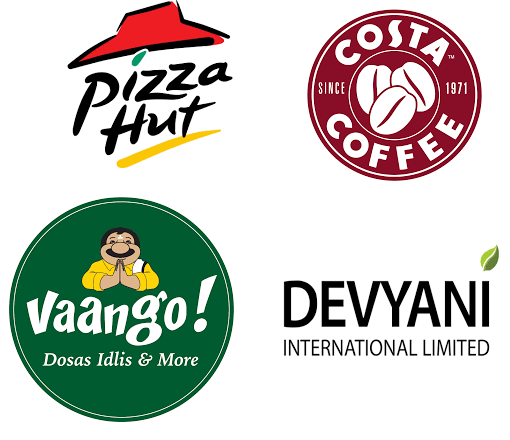
Takeaway
The most popular and reliable food brands we go to are listed on the Indian Stock Exchange. Brands such as Dominos, Dunkin Donuts, Hong’s Kitchen, are owned by Jubilant Foodworks company. On the other hand, brands such as Pizza Hut, Costa, Vaangos, KFC, are owned by Devyani International company. Both these companies have good growth in revenue and profits in the last 5 years. These companies have a healthy future growth potential, driven by store expansion in both metro and tier 2/3 cities, and riding the food delivery boom in India.
3.4 Hospitals
In the second half at work, Anuj starts feeling a little sick. It might be the heavy pizza lunch. But to be sure, he decides to order some paracetamol tablets, along with some Vitamin C and Zinc tablets to boost his immunity.
He uses the Apollo Hospital site to order these medicines. He was pleasantly surprised to see that Apollo Hospital now has a WhatsApp chat bot to track deliveries, and raise service requests. The delivery happens within 3 hours of ordering – not bad. [Company: Apollo Hospitals].

Anuj takes a paracetamol tablet, and takes a short rest in the medical room of his office. The medicine packaging with the Apollo logo reminds him of the premium brand Apollo has become. Apollo Cradle being the preferred choice for child healthcare. Even other countries in South Asia prefer to visit Apollo Hospitals to have major surgeries, and complex diagnosis done. As Anuj wakes up after a short nap, he feels refreshed and gets back to work.
At 5 pm, Anuj and his manager Mr. Raunak step out of office to pay a visit to an intern in their team, who broke his elbow earlier in the week and was admitted in the adjacent Narayana Hrudayalaya hospital. Nothing to worry, the intern is fine. He is under 2 days observation in the hospital, post which he is expected to be discharged to rest (and maybe work from home).
Anuj and his manager talk about how budget friendly Narayana hospitals are [Company: Narayana Hrudayalaya: NH]. Anuj’s manager had her mother admitted to NH hospital for a lung infection for over a month, with a resulting bill of less than INR 3 lac. Anuj remarked: “Isn’t it amazing to see NH hospitals springing up in so many cities, and not just in and around in metro cities”. His manager nods in agreement, as they enter the ward where the intern was admitted.

Takeaway
The hospital industry in India is growing at a decent pace. With basic healthcare still a distant dream for many Indians, we are slowly, and steadily getting there. Different hospital companies have different niches, and growth strategies. On one hand, we have the premium brands such as Apollo Hospitals, who enjoy additional revenues from medical tourism, and are tapping into the eCommerce penetration and online delivery market in India. On the other hand, we have brands such as Narayana Hrudayalaya, who are focused on efficient operations, and cater to the budget hospital services for the middle class in India.
3.5 Retail
Anuj wraps up his work by 6pm. He has to pick up his sister for a quick evening shopping. He knows that shopping with his sister is never quick! Anuj takes a cab to the nearest mall, where he is supposed to meet his sister.
On the cab, he remembers her sister’s birthday is a week away. He opens Caratlane website to order a stylish earring pair. Anuj has to visit his friend’s son’s 10th birthday party over the weekend. What should he buy as a birthday gift for a 10yr old? He remembered that his friend’s son likes Batman movies, and often repeats Batman’s dialogues while playing. That is it! Anuj opens Fastrack website to order a Batman themed watch, and adds on a gift wrap for the order. [Company: Titan]. Anuj smiles to himself, he has really gotten better at quick shopping while travelling to and from from office.
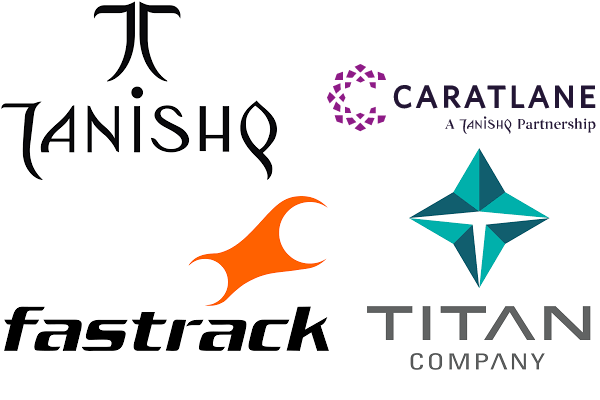
Anuj gets down at the mall, where her sister greets him. They go into the mall, and enter the Westside store. It is a massive store, with multiple shopping levels for men, women, and kids [Company: Trent].

As her sister gets lost in racks of bags and accessories, Anuj notices Mohey’s store across the floor. He has always dreamt of saving up enough to buy a premium looking ethnic wear. Anuj thinks for a minute, then signals her sister he will be back in 10-15 minutes. Her sister hardly cared, mesmerized by so many options of perfumes and bags. Anuj went straight for the light blue kurta and cream pajama set on display at Mohey. Anuj knew his size, and was quick to choose, try, pay, and leave with his Mohey purchase. [Company: Vedanta Fashions]. Anuj is looking forward to the upcoming Diwali festival to surprise his parents in the new ethnic wear he just purchased.

Takeaway
Shopping stores such as Titan, Westside, and Manyavar/Mohey offer premium lifestyle choices. They operate in a largely unorganized industry, which gives them a large room to grow into the future, and capture market share from the unorganized market. They offer aspirational products, which appeal to the fast growing middle class segment in India. These companies are launching different brands to cater to different segments of the customers.
We see from the table below that all these three companies are growing at over 10% CAGR in the past 5 years, which is a good sign. Trent’s profits have declined only once in 2021, owing to a one time large expense. Apart from that, all these three companies have good future growth prospects.
3.6 Alcohol Beverages
Anuj had a light dinner with his sister at the mall’s food court. He returned to his flat by around 9pm. It is Friday night, but he is too tired to go out again and hang out with his friends. What he needs is a smooth whisky, a pack of peanuts, and watch a movie on Netflix.
He opens his fridge to reach for his favorite Rampur Whiskey bottle. It is almost empty, but still has enough to make a peg. Anuj prefers domestic liquor brands, and drinks foreign brand liquor only during office parties. [Company: Radico Khaitan].
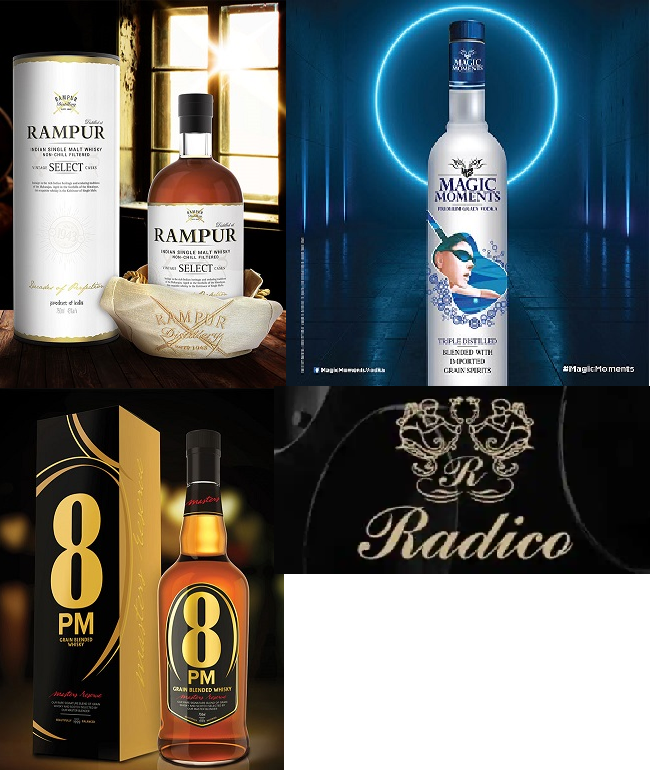
Arjun notices a fully packed bottle of Oakton Whiskey gifted to him by his school friend when they last met a month back, after a gap of 10 years. The Oakton whiskey bottle has a premium look, with the transparent whisky color shining at him. Arjun thinks – What better day than a tired Friday to open this new bottle of whiskey. [Company: Globus Spirits].

Anuj is all set for his Friday night. And sips away at the Oakton whiskey, as he toggles Netflix to decide which movie to watch.
Takeaway
Alcoholic beverages are slowly being accepted in Indian culture. With increased adoption, premium brands, and domestic products are gaining traction. Be it celebrating an occasion, gifting someone, or hosting a house party – alcohol beverages fit right in. As per National Family Health Survey 2019-21, only 19% men and 1.6% women consume alcohol in India (article link). This is low, as compared to more than 85% of adults in the USA who consume alcohol.
Both Radico Khaitan and Globus Spirits have shown good growth in revenue and profit in the last five years. With their focus on domestic brands, distribution reach, they are well positioned to grow well. One can consider investing in these companies for the next 5-7 years. Another alcohol beverage company I like is Sula. I enjoy their wine collection, and have visited their vineyards near Nashik. I am waiting for them to get listed in the stock market in late 2022, and will evaluate investing in this company given their valuation is fair.
3.7 Anuj’s Stock Portfolio
Anuj can invest in 13 companies, whose products or services he uses daily. Anuj’s stock portfolio of 13 companies is both concentrated, and diversified over six industry sectors. Let us assume Arjun invested INR 20,000 in each of these 13 companies five years ago, in September 2017. Below table gives the overall returns from Arjun’s investments.
Do note that for recently listed companies for which 5 year returns are not available, I have taken average Nifty 50 index returns of 14%. These recently listed companies are Vedant Fashions, HDFC Life Insurance, and Devyani International. These companies’ peers have grown much more than 14% CAGR in the past 5 years, hence we can expect these recent listed companies to give at least nifty index average returns.

We see that Arjun would have tripled his money, in just five years. Arjun would have made exactly 2.8X returns by investing in these companies over the past five years. This beats the Nifty 50 index returns by a large margin. Nifty 50 only gave 80% returns in the last 5 years (from 2017 to 2022), thus making your investments 1.8x. On the other hand, Arjun’s concentrated yet diversified portfolio gave 2.8x returns. Not bad, not bad at all!
4. Parting Thoughts
I hope you now understand the difference between concentrated and diversified portfolios. A portfolio of 10-30 stocks, spread across 4-6 industry sectors is a decent one. How many stocks you choose between 10-30 numbers, depends on how much time you can devote to picking stocks and reviewing their news and performance. If you can spend a couple of hours every weekend, then you should be good with 10-20 stocks in your portfolio.
How you pick stocks is not that difficult. Instead of getting confused by so many recommendations online, it is better to start your investment journey using your daily life experience. In section 3, I follow the journey of a working professional, Mr. Anuj, and what all products and services he interacts with daily. Many of the companies behind these products/services are listed on the stock exchange. What better way to start investing, than to invest in the companies you trust and buy from for your daily needs.
Do note that once you have selected companies you want to invest in, you can do a short technical analysis to evaluate valuation price to buy the stock. As technical analysis will take a new post altogether, for now I will give you a thumb rule to find the right price to buy a stock. Look at the 200 day moving average price of a stock, also known as 200 DMA. If the current price of the stock is below 200 DMA, it is in a buy zone and is fairly valued. Then, look at the past 5 years median PE of the company. Current PE of the company at or below historical median PE of the company indicates a buy zone.
To summarize: Buy if current market price <= 200 DMA, AND current PE <= Historical median PE_5 Yrs. If both of the above are not true, avoid buying the stock right away and wait for the opportune time to purchase the stock.
Do not worry if you find this technical analysis part boring to understand. If you have a long investment horizon, north of 5 years, then the price at which you enter a company does not matter a lot. The company will grow in the next 5 years, and will generate returns for you.
Which companies’ products do you like using in your daily life? Are these companies listed?
Please share in the comments below.
Happy Investing!
Disclaimer: This post is not stocks’ advisory. Please so your own due diligence before investing.
